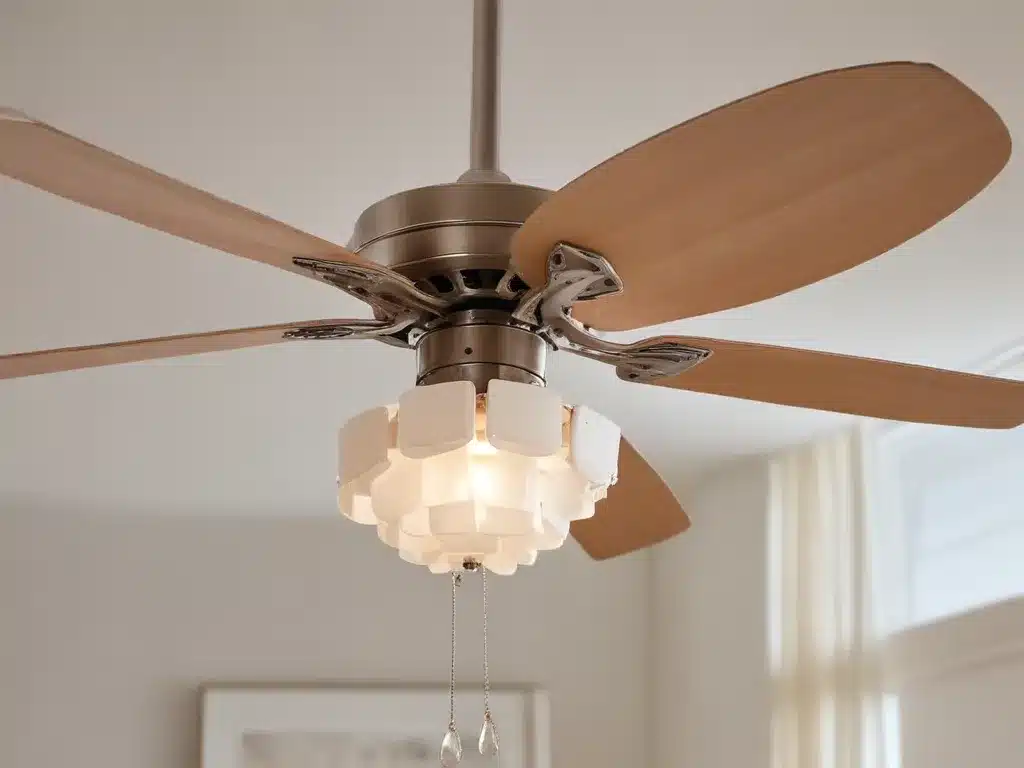Introduction
As a professional cleaning service provider, I encounter numerous households where certain areas are often overlooked during routine cleaning. These neglected spots can accumulate dust, grime, and even harbor allergens, compromising the overall cleanliness of your living space. In this article, I aim to shed light on those forgotten corners and provide you with valuable insights and tips on how to effectively clean them.
Ceiling Fans: The Overlooked Dust Collectors
Ceiling fans are a common fixture in many homes, providing much-needed air circulation and comfort. However, they are also notorious for accumulating dust, pet hair, and other airborne particles. The blades of the ceiling fan can be challenging to reach, making it easy to overlook their cleaning.
The Importance of Regular Ceiling Fan Cleaning
- Neglecting to clean ceiling fans can lead to the buildup of dust and allergens, which can be circulated throughout the room, potentially aggravating respiratory issues.
- Dust accumulation on the fan blades can also affect the fan’s efficiency and lifespan.
- Regularly cleaning ceiling fans enhances the overall air quality and promotes a healthier living environment.
Effective Cleaning Methods for Ceiling Fans
- Use a microfiber duster or a vacuum cleaner attachment specifically designed for ceiling fans to remove surface dust and debris.
- For a more thorough cleaning, create a solution of warm water and mild dish soap. Dip a clean cloth or paper towel into the solution, wring it out until it’s damp, and gently wipe down each blade.
- Ensure the fan is turned off and the blades are stationary before cleaning to prevent accidents.
- Consider using a ladder or step stool to reach higher ceiling fans safely.
Lampshades: The Overlooked Dust Magnets
Lampshades are often overlooked during routine cleaning, yet they can accumulate a significant amount of dust and grime over time. Neglecting to clean lampshades can not only diminish their aesthetic appeal but also potentially contribute to allergies and respiratory issues.
The Importance of Cleaning Lampshades
- Dust buildup on lampshades can reduce the amount of light emitted, making the room appear dimmer.
- Dust and grime can discolor and damage the lampshade material, reducing its lifespan and appearance.
- Regular cleaning of lampshades can improve indoor air quality and prevent the circulation of dust and allergens.
Effective Cleaning Methods for Lampshades
- Start by assessing the type of material your lampshade is made of, as different materials require different cleaning approaches.
- For fabric lampshades, use a vacuum cleaner with a soft brush attachment to gently remove surface dust.
- For glass or plastic lampshades, mix a solution of warm water and mild dish soap. Dampen a clean cloth with the solution and gently wipe down the lampshade, taking care not to oversaturate it.
- For delicate lampshades, consider using a microfiber duster or a clean, dry cloth to gently remove dust.
- Always unplug the lamp before cleaning the lampshade to prevent electrical hazards.
Other Forgotten Corners and Surfaces
Beyond ceiling fans and lampshades, there are several other areas in your home that often go unnoticed during cleaning routines. These include:
1. Baseboards and Moldings
Baseboards and moldings can accumulate dust, dirt, and even scuff marks over time. Use a damp cloth or a vacuum cleaner with a crevice tool to clean these areas regularly.
2. Light Switches and Outlet Covers
Light switches and outlet covers are frequently touched, making them prone to collecting fingerprints, grime, and dust. Wipe them down with a disinfectant cleaner or a damp cloth to maintain a clean and hygienic environment.
3. Ceiling Corners and Edges
Ceiling corners and edges are often overlooked during routine cleaning, allowing dust and cobwebs to accumulate. Use a vacuum cleaner with a long attachment or a duster to reach these hard-to-reach areas.
4. Behind and Under Furniture
Dust, pet hair, and other debris can accumulate behind and under furniture, creating an unsightly and unhygienic environment. Regularly move and clean behind furniture to maintain a clean and fresh living space.
5. Window Sills and Tracks
Window sills and tracks can collect dirt, dust, and even mold if left uncleaned. Use a damp cloth or a vacuum cleaner with a crevice tool to clean these areas regularly.
Incorporating Regular Cleaning into Your Routine
To ensure that these often-forgotten areas remain clean and dust-free, it’s essential to incorporate their cleaning into your regular routine. Here are some tips to help you achieve this:
- Create a cleaning schedule that includes these neglected areas, and stick to it.
- Use the right tools and cleaning products for each surface to ensure effective cleaning.
- Involve family members or consider hiring a professional cleaning service to tackle these tasks efficiently.
- Stay organized and keep cleaning supplies readily available for quick cleanups.
Conclusion
By addressing the often-forgotten areas in your home, such as ceiling fans, lampshades, baseboards, and ceiling corners, you can improve indoor air quality, enhance the aesthetic appeal of your living space, and promote a healthier environment for you and your loved ones. Remember, regular cleaning and attention to detail are key to maintaining a truly clean and welcoming home.







